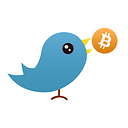Why are All Memecoins Rising? Should you Invest?

Over the past week, the entire cryptocurrency market has been experiencing a bullrun, and it’s being led by memecoins like Shiba Inu, Dogelon Mars, and Floki Inu. These coins are up hundreds, if not thousands, of percentage points in a very short period of time, and many people are wondering whether or not they should invest in these risky and speculative projects.
The cryptocurrency world, as legitimate as it has become over the past few years, is still a highly speculative and volatile market. This is evident due to the existence and popularity of memecoins, or coins that have no value other than the value attributed to them by people who buy it. When someone buys a memecoin, they do not expect returns to come from the team behind the project creating new and exciting technology, but instead from other people FOMOing into the project and buying the coin at a higher price.
This is exactly what happened with Dogecoin last summer, where it went from a price of less than a penny to a high of nearly 70 cents. Naturally, this got plenty of media attention from reputable sites such as CNBC and Bloomberg, and gave the cryptocurrency community the reputation of being silly and ridiculous.

After seeing the success of Doge, developers decided to create their own meme coins, most based around dogs, and try to make them the next Dogecoin. This happened at a massive scale, and there are now thousands of Dog-theme coins and tokens trading on the open market.
Most of these coins will never see a market capitalization greater than $10,000, but investors in these coins hope that if their coin truly does become the next Dogecoin, they will be millionaires and set for life.

The memecoin with the greatest shot at becoming the next Doge is Shiba Inu, which is currently at a staggering market capitalization of $36 billion and is up 1000% in the past month. Another memecoin, Dogelon Mars, recently broke the top 100 coins by market capitalization and is worth $1.1 billion, up 44x from October 1st.

These massive gains have many investors wondering what coin will be next, and as a result they are pouring money into smaller dog coins, hoping one of them takes off and becomes the fourth memecoin with a billion-dollar market capitalization.
Though this is a tempting strategy, it is extremely risky. At this point, choosing the next memecoin is much more like gambling than investing, and thus has much lower returns. Even though Dogelon holders have seen massive returns, there are thousands of others who chose the wrong memecoin, and are now down 70% or more on their investment.

Furthermore, these memecoins will not hold their value once the cryptocurrency bull run ends. When this happens, people will sell their memecoins, as they hold no inherent value, and move into safer projects or out of cryptocurrencies entirely.
Choosing a memecoin not only requires an investor to choose correctly, but also time the market properly. As seen with Dogecoin, memecoins tend to rise incredibly quickly, and fall just as fast. If an investor does not get out at the right time, they will lose a significant amount of money, and would have been better off simply investing in Bitcoin or another blue chip crypto.
Memecoins, like any other gambling instrument, create stories about fantastical returns that could turn an everyday person into a millionaire overnight. But, just like with real gambling, they fail to acknowledge the thousands of others who lose their money and end up in a worse position because of their decisions. Investing in a memecoin is by no means a bad thing, but investors in memecoins should know that they are gambling on highly speculative assets and will likely lose money in the end.
By Lincoln Murr
